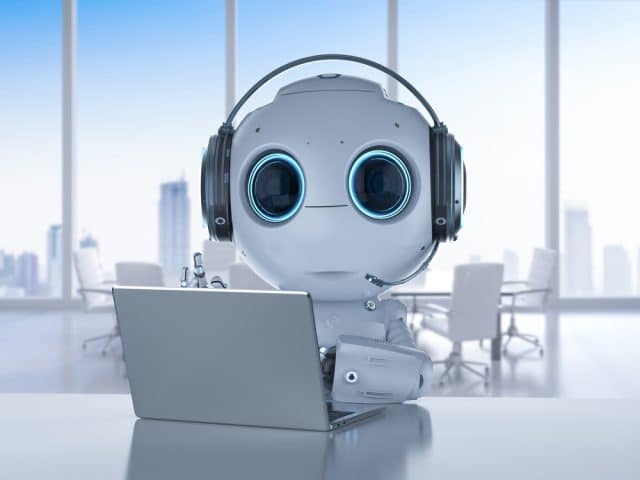Streamlining public transportation CX with AI-powered chatbots

Public transportation systems have a rich history dating back over a century, with iconic examples like the 1863-established London Underground and New York City's subway, which began operations in 1904. While these systems have evolved alongside technological advancements and urban growth, the expenses involved in maintaining and modernizing them often surpass the available resources.
In the U.S., these upgrades tend to be notably more expensive than in other countries. For example, the installation of protective screen doors at just three subway stations in New York is estimated to cost a staggering $100 million. As a result, public transportation experiences often fall short of contemporary expectations, leading to delays, complex route planning and frustrations arising from the need to cross-reference information. All these elements contribute to reduced commuter satisfaction in comparison to alternative modes of transportation, such as cycling or driving.
In this landscape marked by a myriad of public transportation challenges, an enhanced customer experience (CX) necessitates a multifaceted approach. While several cities have implemented CX-focused initiatives aimed at improving cleanliness and public safety, the potential of conversational AI remains relatively untapped within the public transport sector.
Chatbots: A Revolution in the Travel Experience
AI-powered chatbots have the potential to alleviate the common frustrations faced by public transportation commuters, offering streamlined communication, real-time information and an enhanced overall user experience. Here's how they achieve this:
- Efficient Route Planning and Inquiries: Chatbots introduce a personalized and interactive approach to help commuters plan their journeys, making the process more intuitive and user-friendly. Instead of the conventional method of cross-referencing maps and travel schedules to arrange their routes, commuters can now engage with a chatbot, which functions like a personalized travel agent. Chatbots can provide various route options, compare pricing for different routes, suggest stops nearest to specific destinations and offer alternative walking paths for transit connections. In cases of delays or disruptions, chatbots can promptly propose alternative routes, ensuring a smoother travel experience. What makes chatbots particularly valuable is their ability to learn and adapt through machine learning, so the more users interact with them, the better and more personalized their recommendations become.
- Seamless Ride Booking and Assistance: Beyond assisting with route planning, chatbots have the capacity to seamlessly integrate booking and payment processes, streamlining the entire experience. Commuters no longer need to switch between chat apps and booking services; everything can be handled in one transaction. Many of these apps also facilitate quick and easy payments and provide a QR code that serves as the digital ticket upon arrival at the transit point. For example, the Mumbai Metro sells tickets directly through WhatsApp, simplifying the CX, reducing the strain on ticketing agents and long lines at ticketing kiosks.
- Real-Time Travel Alerts and Assistance: Even after commuters are on board their chosen mode of transportation, chatbots continue to offer real-time assistance. Few experiences are as frustrating as arriving at a connection point only to discover that the next train or bus is delayed. Chatbots are ideally positioned to alleviate this stress by providing real-time, conversational updates during the journey. Well before reaching the next stop, users might receive a message informing them of a delay in their connecting tram. The chatbot can then suggest an alternative stop where they can make a different connection ensuring they still arrive at their final destination on time.
- Diverse Language Support: In the public transport sector, chatbots can offer multilingual support, enabling passengers to interact in their preferred languages. This functionality enhances accessibility and guarantees a more inclusive user experience for commuters hailing from diverse linguistic backgrounds. For instance, in a diverse metropolis like New York, where people from across the globe reside and visit, a public transport chatbot can accommodate endless language options, including English, Spanish, Mandarin, Arabic.
- Accessibility Insights: Beyond language support, chatbots can extend their utility by delivering valuable information on accessibility features for passengers. This encompasses specific details about which stations provide step-free access, ramps, elevators, or other provisions designed to assist individuals with mobility challenges.
Chatbot Optimization: A Key Component of Seamless Public Transport CX
Chatbot optimization is a critical aspect of improving public transport CX. While chatbots offer a promising solution for enhancing public transport CX without incurring excessive costs, their implementation presents its own unique set of challenges. For example, inadequate testing during development can lead to a frustrating user experience down the line. During their initial deployment, chatbots may deliver inaccurate responses and grapple with diverse user queries if they have not been adequately trained. To ensure a positive CX, continuous testing and monitoring are essential.
Continuous chatbot testing services assume a crucial role in steering the machine learning processes of chatbots, ensuring a seamless and secure user experience. These services empower chatbots to adapt and learn over time, reducing errors and enhancing user satisfaction. Therefore, integrating chatbot optimization practices into the development and maintenance of public transport chatbots is imperative for delivering seamless CX.
In a world where public transportation systems continue to grapple with the complexities of modern urban life, conversational AI-powered chatbots emerge as a ray of hope. They pledge to deliver a more efficient, user-friendly and interconnected travel experience, covering aspects like route planning, booking, real-time updates and personalization based on user preferences.
To fully unlock the potential of chatbots and elevate the commuter experience to new levels, the public transportation sector must make comprehensive investments in chatbot testing and monitoring services. This investment will propel public transport into the digital age, where efficiency and customer satisfaction take center stage.
Image credit: phonlamai/depositphotos.com
Christoph Börner is Senior Director Digital, Cyara.
